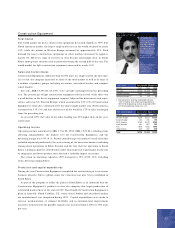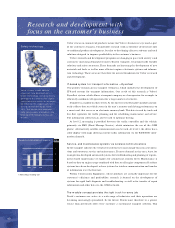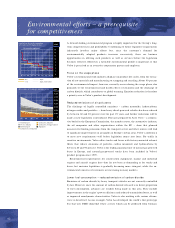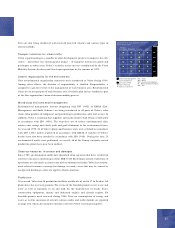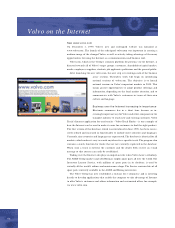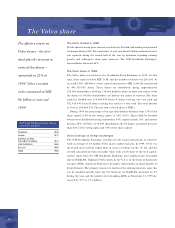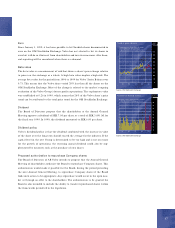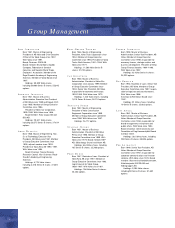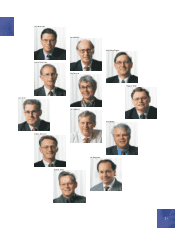Volvo 1999 Annual Report Download - page 45
Download and view the complete annual report
Please find page 45 of the 1999 Volvo annual report below. You can navigate through the pages in the report by either clicking on the pages listed below, or by using the keyword search tool below to find specific information within the annual report.
43
Tests are also being conducted with fuel-cell powered vehicles and various types of
electric hybrids.
Transport solutions for urban traffic
Volvo is participating in a number of joint development projects to improve the effi-
ciency – and reduce the environmental impact – of transport systems for goods and
passengers in urban areas. Volvo’s activities in this area are coordinated by the Volvo
Mobility Systems business unit that began operations in the summer of 1999.
Clearer responsibility for the environm ent
New environmental organization structures were introduced at Volvo during 1999.
Among other effects, the division of responsibility is clarified. Responsibility is
assigned to a greater extent to the management of each business area. Environmental
issues are an integral part of each business area’s business plan and are handled as part
of the line organization’s normal decision-making process.
World-class environm ental m anagem ent
Environmental management systems complying with ISO 14001 or EMAS (Eco-
Management and Audit Scheme) are being introduced in all parts of Volvo’s value
chain, from product-development and purchasing to production, sales and service. In
addition, Volvo is requiring that suppliers and major dealers shall obtain certification
in accordance with ISO 14001. The objectives are to reduce environmental risks,
achieve cost savings and clarify goals and goal-attainment in the environmental area.
At year-end 1999, 24 of Volvo’s plants and business units were certified in accordance
with ISO 14001 and/or registered in accordance with EMAS. A number of Volvo’s
dealers have also been certified in accordance with ISO 14001. During the year, 23
environmental audits were performed; as a result, all of the Group’s majority-owned
production plants have now been audited.
Clean-up m easures, insurance and damages
Since 1989, environmental audits have identified clean-up needs that have resulted in
corrective measures amounting to about SEK 47 M. Environmental risk evaluations of
operations are also made in connection with environmental audits. Volvo has environ-
ment-related insurance coverage for damage to nearby areas that may be caused by
unexpected discharges (does not apply in North America).
Production
At year-end, Volvo had 46 production facilities worldwide, of which 17 in Sweden. All
plants have the necessary permits. The terms of the Swedish permits cover waste and
noise as well as emissions to air and land for the manufacture of trucks, buses,
construction equipment, marine and industrial engines and aircraft engines. No
Swedish permits need renewals during 2000. Data on consumption of energy and
water, as well as emissions of solvents, nitrous oxides and sulfur dioxide are reported
on page 106, which also includes emission values for Volvo’s internal transports.
Environmental managem ent system s in
Volvo value chain
Product-
development
Environmental management
system implemented
Some units certified
Work commenced
Work not commenced
VTC = Trucks
VBC = Buses
VCE = Constructions Equipment
VP = Marine and Industrial engines
VAC = Aero
Purchasing
Production Market
VP
VAC
VTC
VBC
VCE


